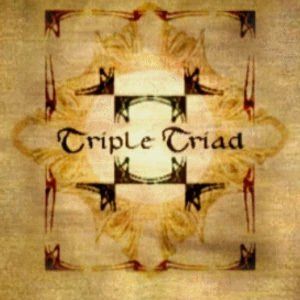The cards are made up of a few elements but only two are important; the Ranks and the Element. The Ranks are a group of 4 numbers in the top left corner of the card and the Element is represented by a symbol in the top right corner (not all cards have an element).
The ranks correspond to each side of the card; the number on the top represent to top edge of the card, the number on the right represents the right edge and so on. The cards are colour-coded blue and pink to show who they belong to; player and opponent respectively.
The Element is important in some games with the Elemental rule in place; this will be explained later.


